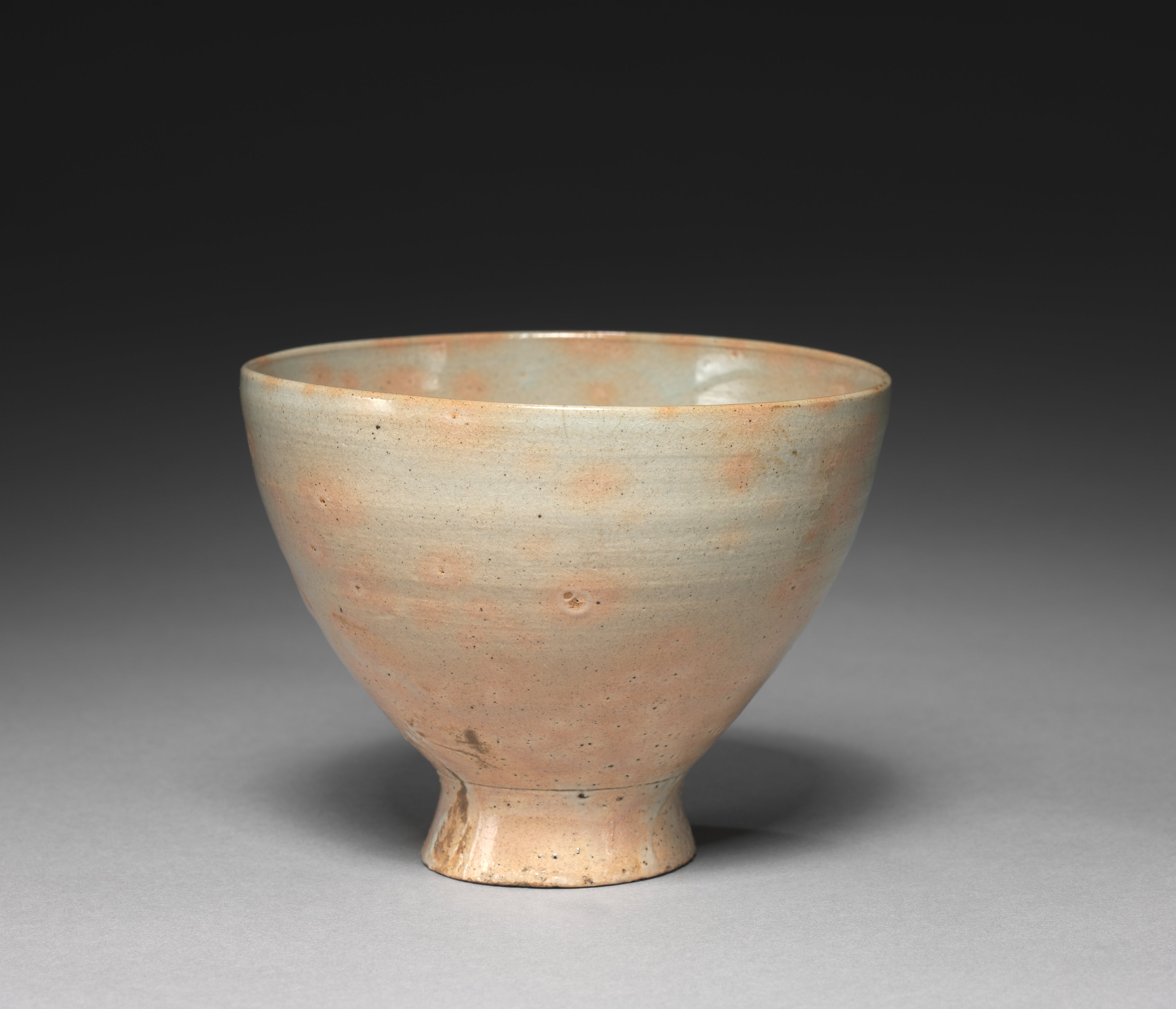The Cleveland Museum of Art
Collection Online as of April 19, 2024

Tea bowl
1700s
(1392–1910)
Diameter of mouth: 13.7 cm (5 3/8 in.); Overall: 11 cm (4 5/16 in.)
Edward L. Whittemore Fund 1986.84
Location: not on view
Did You Know?
Pinholes in the light pinkish glaze were intended to resemble "fawn spots."Description
Possibly produced in one of the kilns established by the trading office (Waegwan) in Busan, southern Gyeongsang province, this type of bowl with an elongated foot was exported to Japan and circulated as an item of foreign luxury among Japanese tea ware collectors. Pinholes in the light pinkish glaze were intended to resemble "fawn spots."- ?-1986Robert W. Moore, Los Angeles, CA1986(Christie's, New York, NY, sold to the Cleveland Museum of Art)1986-The Cleveland Museum of Art, Cleveland, OH
- Jeong, Dong-ju. From Joseon Rice Bowl to Yido Tea Bowl [조선 막사발과 이도다완]. Paju: Hangil ateu, 2012.Hur, Nam-lin. “Korean Tea Bowls (Kōrai Chawan) and Japanese Wabicha: A Story of Acculturation in Premodern Northeast Asia.” Korean Studies 39 (2015): 1–22. www.jstor.orgKang, Mu-Chang. "A Study on the Characteristics of Japanese Made-to-Order Ceramics and the Transition Process of Busan Waegwanyo Kiln - With a focus on Commissioned Tea Bowls [일본 주문 도자기의 특징과 부산 왜관요 변천과정에 관한 연구 - 주문다완(御本茶碗)을 중심으로]." Hankuk dojahak yeongu 17, no. 3 (2020): 5-19. www.dbpia.co.krHeo, Hyun-Jung. "Resource Supply and Demand of Waegwanyo in the Late Joseon Dynasty [조선후기 왜관요의 자원 수급]." Hangdo busan no. 39 (2020): 205-239. www.dbpia.co.kr
- Year in Review for 1986. The Cleveland Museum of Art, Cleveland, OH (organizer) (February 4-March 15, 1987).
- {{cite web|title=Tea bowl|url=false|author=|year=1700s|access-date=19 April 2024|publisher=Cleveland Museum of Art}}
Source URL:
https://www.clevelandart.org/art/1986.84